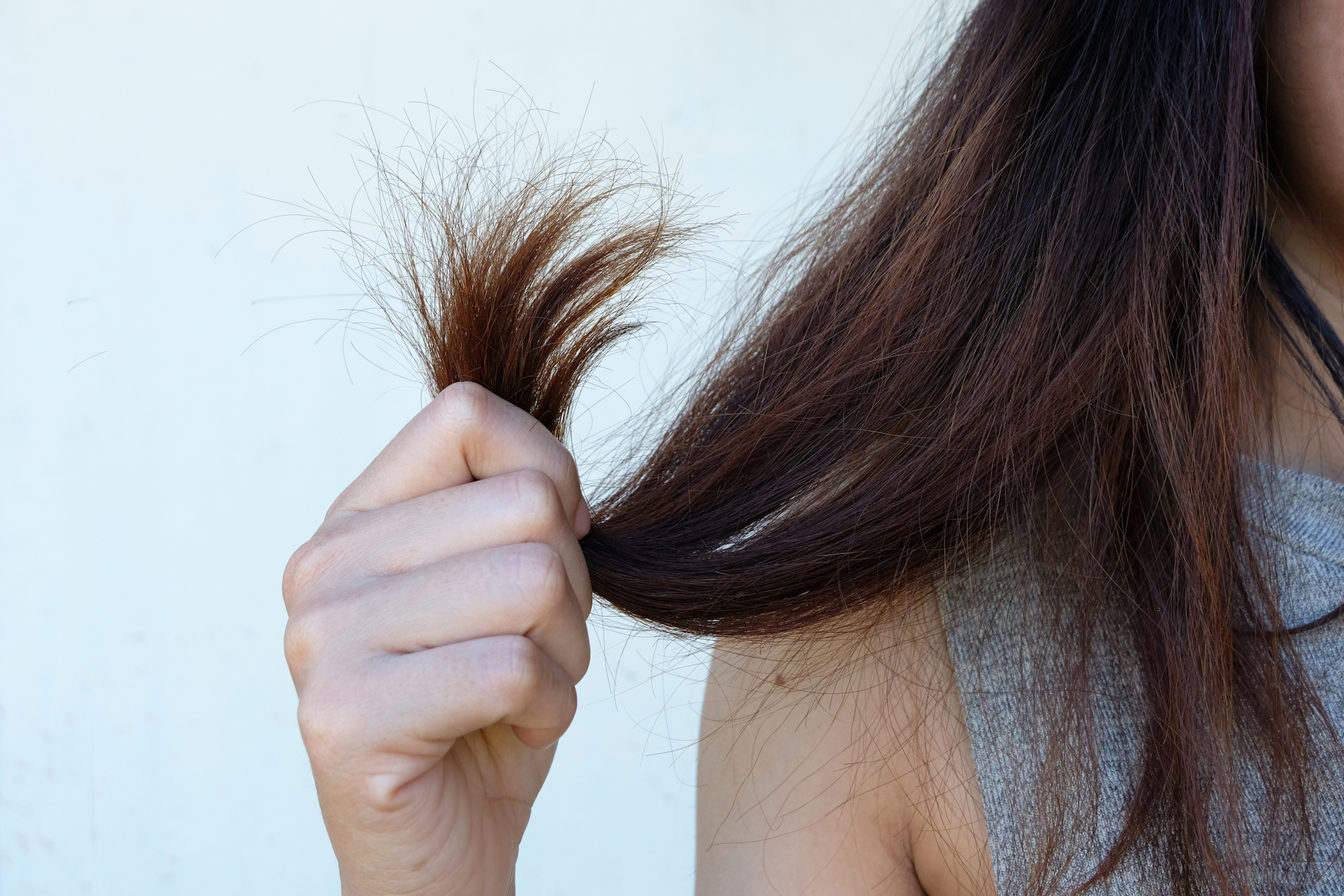
What are split ends ?
They occur when the hair shaft splits from a single strand to multiple, usually occurring at the tip. There are different variations of split ends with different specific causes. In general , this is typically a sign of damaged or unhealthy hair. Excessive chemical treatments, grooming habits, and various environmental exposures can result in progressive damage to the hair, known as “weathering”. This is when the hair becomes frizzy, and tangled, making it difficult to maintain. After repeated exposures, the outer protective layer of the hair, the cuticle, no longer maintains its protective function. The loss of this layer renders the rest of the hair strand more susceptible to subsequent damage and breakage, resulting in the appearance of split ends.
What are the causes of split ends?
Split ends happen when the ends of your hair become dry, brittle, and frayed. It looks like the end of an unravelled rope.
Chemical products will also cause split ends. Perms and relaxants are used to change the shape of the hair from straight to curly, or from curly to straight. For this process to occur, the disulphide bonds that give hair its natural structure must be broken. Disulphide bonds are responsible for both the shape and strength of the hair. When these are broken, the strength of the hair is weakened.
The use of blow dryers, straightening irons, curling irons and other various heat producing tools are common thermal treatments used to manipulate the hair.
When the hair is wet, it can naturally stretch up to 30% without damage. However, if stretched beyond 30% it can lead to irreversible damage and hair fracture. Excessive combing when the hair is wet can lead to additional stretching, and consequently hair breakage. Brushing the hair when dry can also lead to the formation of split ends.
Overexposure to ultraviolet radiation from the sun can cause both physical and chemical damage to the hair. UV radiation causes hair to lose its natural color, and become hypopigmented or lightened
How to fix split ends
· Limit the use of thermal treatments
· Use lower heat temperatures
· Let hair air dry naturally
· Apply hair oils before combing wet hair to reduce excessive stretching
· Use a wide-tooth comb when combing wet hair
· Avoid over-brushing or towel drying hair
· Reduce chemical exposure to hair
· Avoid “Ammonia-Free” hair dye, as they contain other damaging chemicals
· Wear protective hair garments

